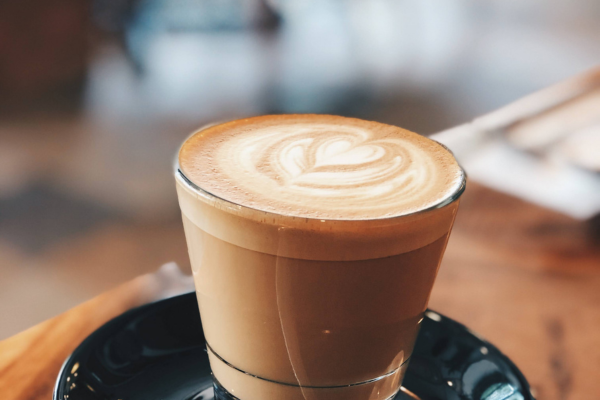Grinding coffee at home may seem like a small step, but it’s one of the most important for brewing a great cup. The way you grind your coffee dramatically impacts the flavor, strength, and overall quality of the final drink.
Whether you’re making espresso, French press, or drip coffee, knowing how to grind coffee at home — and doing it correctly for each method — is the key to consistency and freshness.
This guide will walk you through everything you need to know, from choosing a grinder to matching grind size to your favorite brewing method.
Why Grinding Coffee at Home Matters
Pre-ground coffee starts to lose its flavor minutes after grinding. That’s because grinding increases the surface area exposed to air, speeding up the oxidation process.
Freshly ground coffee = Better aroma + Better flavor + Better control
When you grind coffee just before brewing, you preserve its natural oils and complexity. It’s one of the easiest ways to upgrade your daily cup without spending a lot of money.
Types of Coffee Grinders
There are two main types of grinders: blade grinders and burr grinders. Choosing the right one makes a huge difference.
Blade Grinder
- How it works: Uses a spinning blade to chop beans into pieces.
- Pros: Affordable, compact, widely available.
- Cons: Inconsistent grind size, which affects flavor and extraction.
Best for: Casual coffee drinkers or beginners who don’t mind some inconsistency.
Burr Grinder
- How it works: Uses two abrasive surfaces (burrs) to crush beans evenly.
- Pros: Consistent grind size, better flavor extraction, adjustable settings.
- Cons: More expensive than blade grinders.
Best for: Anyone serious about coffee and wanting better results at home.
👉 If you can, invest in a burr grinder — the flavor difference is worth it.
Understanding Coffee Grind Sizes
Different brewing methods require different grind sizes. Here’s a breakdown from finest to coarsest:
| Grind Size | Texture Example | Brewing Method |
|---|---|---|
| Extra Fine | Powdered sugar | Turkish coffee |
| Fine | Table salt | Espresso |
| Medium-Fine | Sand | Pour-over (e.g. V60) |
| Medium | Sea salt | Drip coffee, Aeropress |
| Medium-Coarse | Gritty sand | Chemex |
| Coarse | Kosher salt | French press, cold brew |
Using the wrong grind size leads to under-extraction (sour, weak coffee) or over-extraction (bitter, harsh taste).
How to Match Grind Size to Brewing Method
1. Espresso (Fine Grind)
- Use a fine, consistent grind — like table salt.
- Too coarse and the water rushes through too fast.
- Too fine and the shot takes too long or tastes bitter.
2. Drip Coffee Maker (Medium Grind)
- Use a medium grind — like beach sand.
- It allows even water flow and proper extraction in automatic machines.
3. Pour-Over (Medium-Fine Grind)
- Slightly finer than drip grind.
- Allows control over extraction time when manually pouring water.
4. French Press (Coarse Grind)
- Use a coarse grind — like sea salt.
- Prevents grounds from slipping through the mesh filter.
- Also helps avoid over-extraction during the longer steeping time.
5. Cold Brew (Extra Coarse Grind)
- Use the coarsest grind possible.
- Ensures a smooth, low-acid brew after steeping for 12–24 hours.
Tips for Grinding Coffee at Home
1. Grind Just Before Brewing
Grinding in advance leads to stale flavors. Even if you’re short on time, grinding fresh will always give better results.
2. Measure Your Beans First
Use a kitchen scale to measure your coffee before grinding — this avoids waste and keeps your brew consistent.
General ratio: 1 gram of coffee for every 15–18 grams of water.
3. Clean Your Grinder Regularly
Old coffee residue can affect the flavor of new beans and even clog your grinder.
- For burr grinders: Clean once a week if used daily.
- For blade grinders: Wipe out with a dry cloth or grind some uncooked rice to clean the blades.
4. Use the Right Settings
If your burr grinder has settings (numbered or stepped), refer to the manual or test different levels. Adjust based on your brew’s taste:
- Bitter = grind coarser
- Sour = grind finer
What If You Don’t Have a Grinder?
If you don’t own a grinder, try these alternatives (in order of effectiveness):
- Manual hand grinder: Affordable and portable
- Buy fresh-ground coffee in small batches from a local roaster (specify your brew method)
- Use a blender or food processor (last resort — results will be uneven)
But for the best experience, a burr grinder is the most reliable tool to grind coffee at home.
Final Thoughts: A Small Habit with Big Results
Learning how to grind coffee at home — and doing it right for your brewing method — transforms your coffee experience. You’ll immediately notice more depth, aroma, and satisfaction in every cup.
The right grind makes all the difference. Whether you prefer espresso, pour-over, or French press, matching the grind to your method unlocks the true potential of your beans.
And remember: freshly ground coffee is always better.

